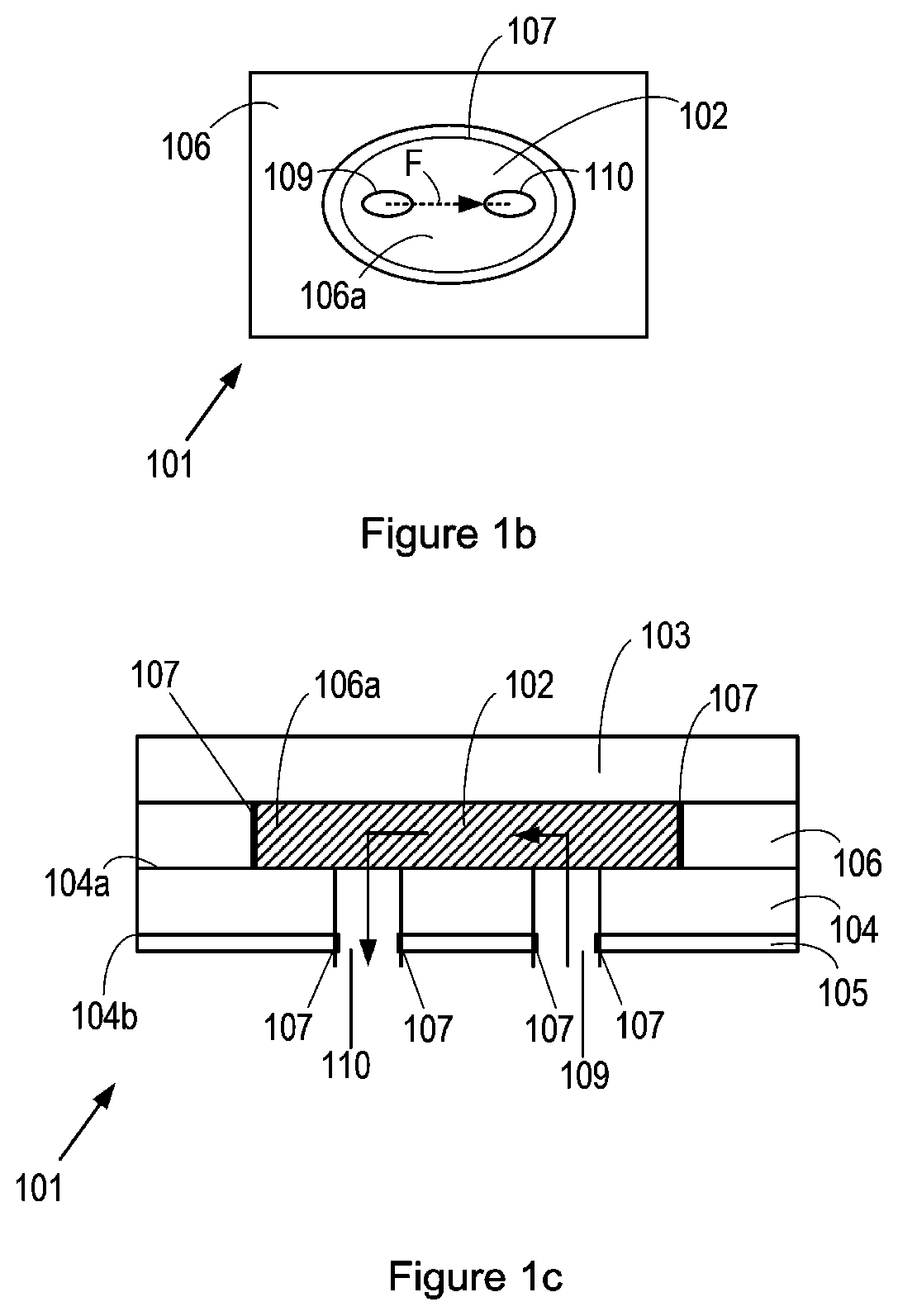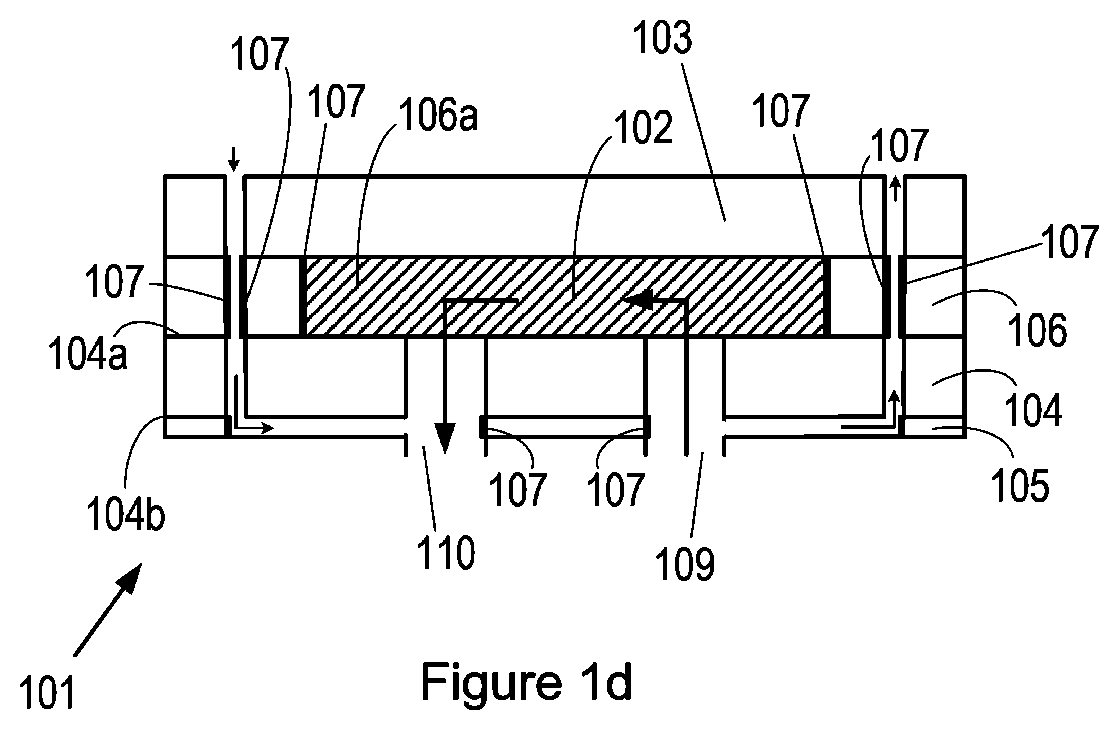Flow batteries with current collectors having a dielectric coating
- Summary
- Abstract
- Description
- Claims
- Application Information
AI Technical Summary
Benefits of technology
Problems solved by technology
Method used
Image
Examples
example 1
[0097]A redox flow battery containing a single cell was constructed, with the arrangement of components on both sides of the membrane being as shown in FIG. 1A and FIG. 3. The membrane was a Nafion 117 membrane. The dielectric layer 105 was a printed circuit board material, namely FR-4, which was bonded using an epoxy pre-preg (Arlon A47N) to a 0.75 mm thick titanium foil, which acted as the current collector 104. The spacer layer 106 on both sides of the membrane was also FR4, each of which had a circular aperture 106A for accommodating a rubber O-ring comprising material with the trade name Viton (available from Simply Bearings), and, within the O-ring, the electrode, which was a 3D carbon electrode, in particular a 36% compressed SGL carbon felt electrode. Each titanium foil 104 and connected dielectric layer 105 had circular through-holes that act as apertures 109 and 110 shown in FIG. 1B. O-rings were in place around the edge of the apertures in the dielectric layer to prevent ...
example 2
Comparison Between the RFB of Example 1 and Reference RFB
[0099]In this Example, the performance of the redox flow battery of Example 1 was compared with that of a traditional endplate-compressed fuel cell, available from Scribner as part of their trade name Scribner 857 Redox Flow Cell Test System. The Scribner Redox Flow Cell comprises of a graphite plate (obtained from POCO Graphite) into which a flow-field may be machined. The carbon felt electrodes sit on this plate and is usually held in place by a PTFE spacer. The thickness of this spacer also will define the amount of compression of the felt electrode. The current passes through the graphite plate and into a gold coated copper current collector. The whole assembly is held together with two anodized aluminium end plates and 8 bolts. Both used the same all-vanadium couple described above. The Scribner RFB used 50% compressed Alfa Aesar carbon felt electrode and a Nafion 117 membrane. The layers of the Scribner were 25 cm2 in ar...
PUM
 Login to View More
Login to View More Abstract
Description
Claims
Application Information
 Login to View More
Login to View More - R&D
- Intellectual Property
- Life Sciences
- Materials
- Tech Scout
- Unparalleled Data Quality
- Higher Quality Content
- 60% Fewer Hallucinations
Browse by: Latest US Patents, China's latest patents, Technical Efficacy Thesaurus, Application Domain, Technology Topic, Popular Technical Reports.
© 2025 PatSnap. All rights reserved.Legal|Privacy policy|Modern Slavery Act Transparency Statement|Sitemap|About US| Contact US: help@patsnap.com



